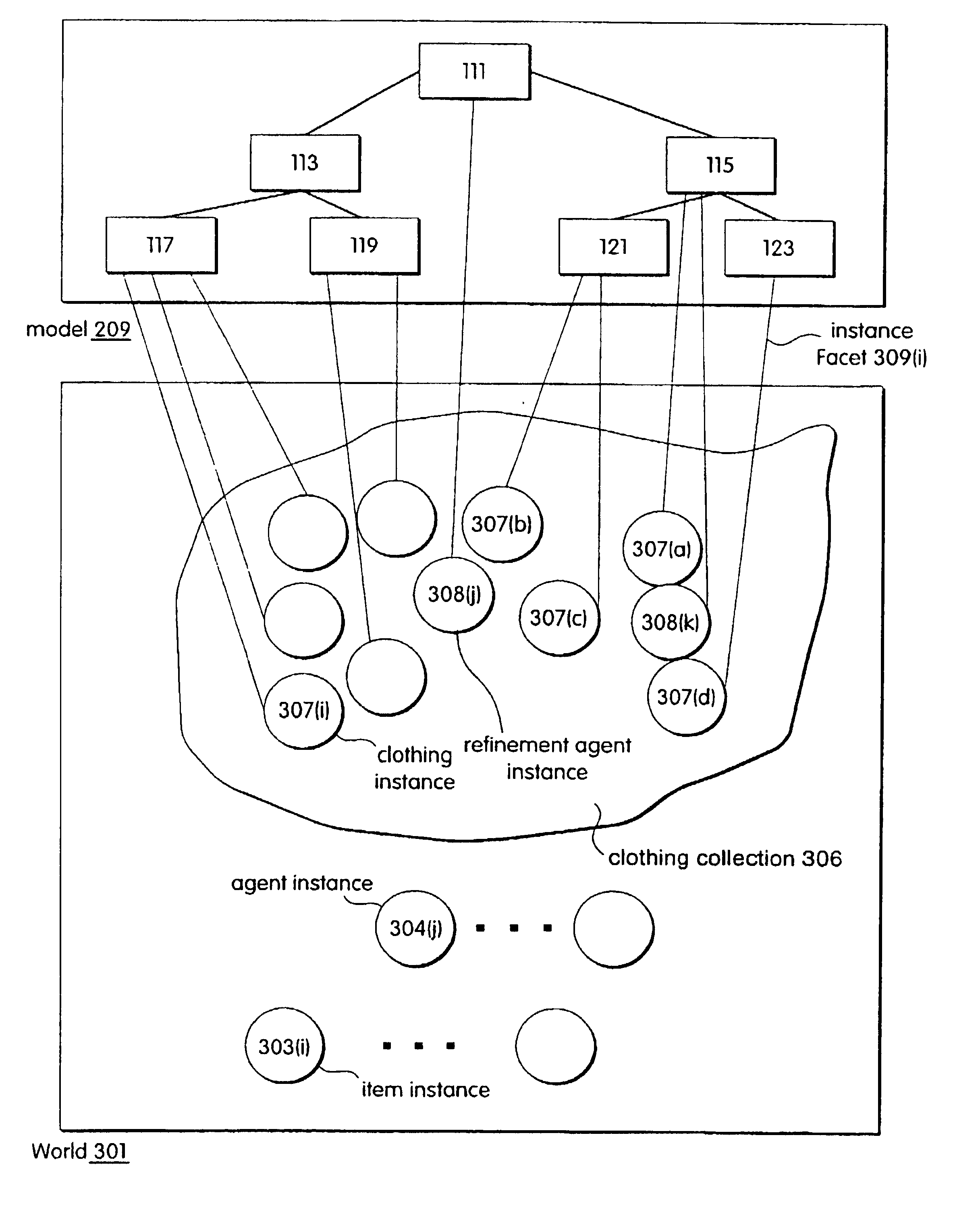Software composition using graph types, graph, and agents
a software and graph type technology, applied in the field of composition techniques, can solve the problems of not having a dtds standard body, w3 xql call can only solve part, and the problem of translating information from one dtd to another remains
- Summary
- Abstract
- Description
- Claims
- Application Information
AI Technical Summary
Benefits of technology
Problems solved by technology
Method used
Image
Examples
Embodiment Construction
[0038]The following Detailed Description will begin with a simple example of how the invention may be used and a description of an implementation of the example and will conclude with a generalized description of the invention.
Using Graphs to Specify Multiple Aspects of a Collection of Data: FIG. 1
[0039]For purposes of the following informal discussion, the term graph is used in the sense of a set of points where at least one of the points is connected to itself or another point by an arc. The points are termed the vertices of the graph and the arcs are termed its edges. In the graphs used in the invention, the vertices represent entities such as concepts and the edges represent relationships between the concepts. In FIG. 1, graphs are used to represent a taxonomy 101 of concepts relating to clothing. The concepts belonging to a given taxonomy are related to each other in both a top-down fashion, i.e., from the most general concept to the least general concept, and a bottom-up fashi...
PUM
 Login to View More
Login to View More Abstract
Description
Claims
Application Information
 Login to View More
Login to View More - R&D
- Intellectual Property
- Life Sciences
- Materials
- Tech Scout
- Unparalleled Data Quality
- Higher Quality Content
- 60% Fewer Hallucinations
Browse by: Latest US Patents, China's latest patents, Technical Efficacy Thesaurus, Application Domain, Technology Topic, Popular Technical Reports.
© 2025 PatSnap. All rights reserved.Legal|Privacy policy|Modern Slavery Act Transparency Statement|Sitemap|About US| Contact US: help@patsnap.com



